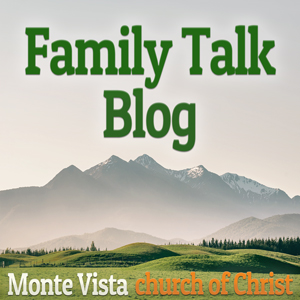There are two events in the life of Jesus that occupy most of the religious world. One event is His birth, the other is His death. However, all are done according to human tradition and not according to scripture. The Bible does not describe a public holiday for these events. Many people argue about the various types and reasons for crucifixion. But times and reasons are not important. The exact date is also unimportant. The only important thing is that nails and a spear were used to cause the blood of the Son of God to flow from His body. The blood to redeem lost souls from eternal separation from God.
The prophets never mentioned crucifixion specifically, but David recorded these words, which were not understood until Jesus died. “A band of evildoers has encompassed me; They pierced my hands and my feet. I can count all my bones. They look, they stare at me; They divide my garments among them, And for my clothing they cast lots” (Psalms 22:16-18). Over five hundred years later, Zechariah wrote: “I will pour out on the house of David and on the inhabitants of Jerusalem, the Spirit of grace and of supplication, so that they will look on Me whom they have pierced; and they will mourn for Him, as one mourns for an only son, and they will weep bitterly over Him like the bitter weeping over a firstborn” (Zechariah 12:10). The words fit the gospel accounts of the treatment of Jesus as He was nailed to pieces of wood to die.
As Pilate talked to Jesus, he said, “You do not speak to me? Do You not know that I have authority to release You, and I have authority to crucify You?” Jesus then informed him of the source of authority. “You would have no authority over Me, unless it had been given you from above; for this reason he who delivered Me to you has the greater sin” (John 19:10-11). In all the power and might given to Rome, they could not put the Son of God to death.
A few weeks before His arrest, Jesus told those around Him, “For this reason the Father loves Me, because I lay down My life so that I may take it again. No one has taken it away from Me, but I lay it down on My own initiative. I have authority to lay it down, and I have authority to take it up again. This commandment I received from My Father” (John 10:17-18). Then when the final moment on the cross had come, Jesus said, “’It is finished,’ and He bowed His head and gave up His spirit” (John 19:30). The blood drained, the physical body could take no more, and the Son of God departed from the earthly covering He had worn for 33 years.
Most people did not realize what had just happened, but nature responded with earthquakes and storms. One significant sign that the work of God’s Son was complete occurred inside the Temple. The veil separating the Most Holy Place, the place where the mercy seat resided, the place where God accepted the atonement sacrifices, was torn from top to bottom. That tear indicated that the presence of God opened to all, not just the High Priest, from then on. Matthew records these events this way. “And behold, the veil of the temple was torn in two from top to bottom; and the earth shook and the rocks were split” (Matthew 27:51). Symbolically, the Presence of God departed from the Temple when Jesus Christ surrendered His spirit to the Father.
The next day was a Holy Sabbath, so the Jews wanted those on the crosses dead and buried before sundown. The Romans broke the legs of the two robbers, but Jesus was already dead. To confirm that He was dead, “A soldier pierced His side with a spear, and blood and water came out” (John 19:34). This seemingly insignificant act, by a Roman, fulfilled two prophecies. One is in Psalm 34:20 and the other in Zechariah 12:10. By not breaking Jesus’ bones, the Romans confirmed Him to be the final and perfect Passover sacrifice (Exodus 12:46; Numbers 9:12).
The death of the Son of God is commemorated by His followers each Lord’s Day as we participate in the memorial communion with Him, often called The Lord’s Supper. “When He had taken some bread and given thanks, He broke it and gave it to them, saying, ‘This is My body which is given for you; do this in remembrance of Me.’ And in the same way He took the cup after they had eaten, saying, ‘This cup which is poured out for you is the new covenant in My blood’” (Luke 22:19-20).
Many make pictures, plaques, and statues of Jesus on the cross. Most people say they do not worship the image, but many have turned the crucified Savior into an idol as Israel turned the brass serpent into an object of worship. King Hezekiah finally destroyed the “bronze serpent that Moses had made, for until those days the sons of Israel burned incense to it; and it was called Nehushtan” (2 Kings 18:4). Let us never replace the worship of God’s Son in our hearts with a metallic image that has no power to save.
